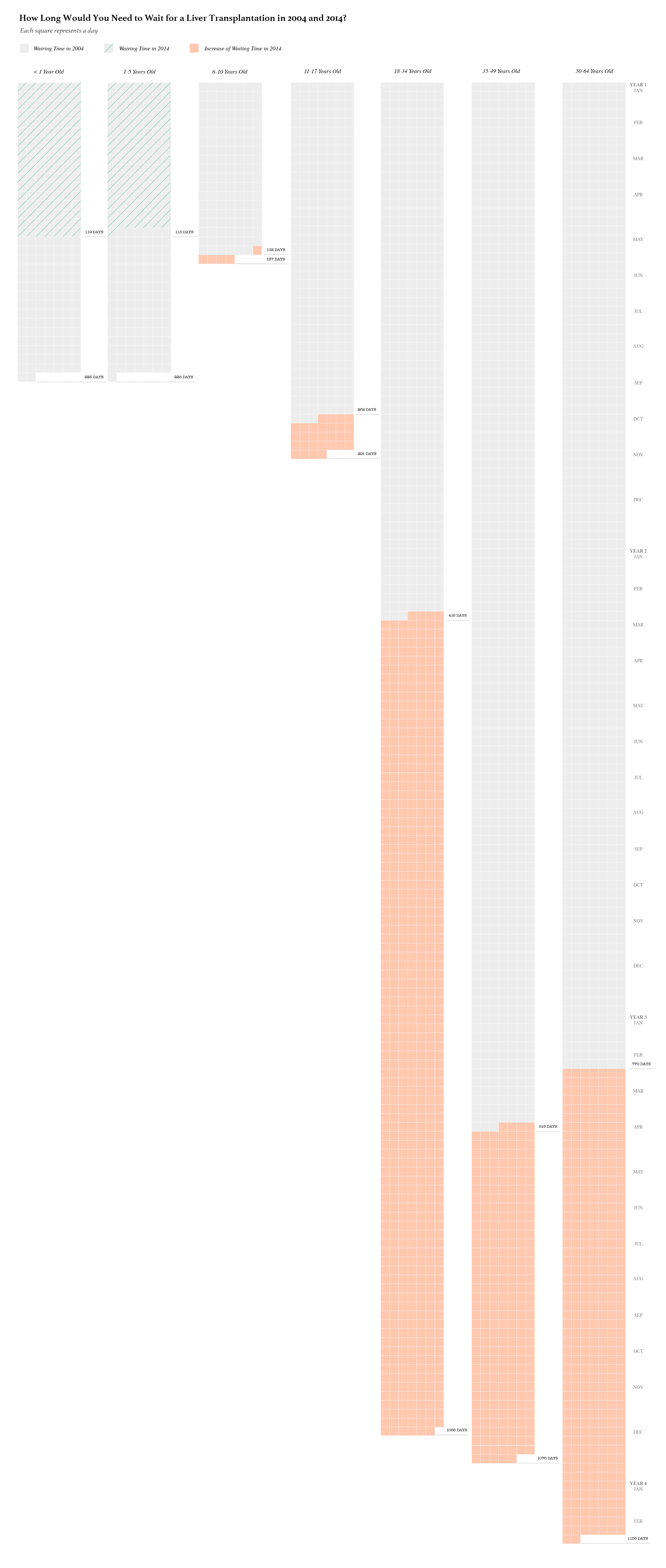How Long Would You Need to Wait for a Liver Transplantation? It Could be 1136 Days.
by CHEN WANG | August 12, 2017 | Documentation | Old Version

Currently there are nearly 14,180 people waiting for a liver transplant in the United States. A patient who needs a liver transplantation must be placed on the national waiting list managed by the United Network for Organ Sharing (UNOS). ‘The Model for End-Stage Liver Disease (MELD) system’, a scoring system implemented February 27, 2002, is used to prioritize patients waiting for a liver transplant. MELD gives each person a 'score' (number) based on how urgently he or she needs a liver transplant within the next three months. The MELD score usually increases as the liver disease worsens in the person on the waiting list.
Candidates age 11 and younger are placed in categories according to the PediatricEnd-stage Liver Disease (PELD) scoring system. PELD is similar to MELD but uses some different factors to recognize the specific growth and development needs of children.
The waiting time for the candidates age 11 and younger decreased overall. However, for the candidates age 12 and olde, the waiting time incresed dramatically, from by 29 days for 11-17 years group to 640 days for 18-34 years group.
One reason for this difference is the smaller gap between the demand and supply of liver donation in younger groups than in older groups. By looking at the donation number of the percentage of total registration number, the donation number is 38% of the registration number in the younger group (<= 11) , and 17% in the older group (12-64). The circumstances of death vary among the age groups as well. In the younger age, the reasons are child abuse; vehicle and non-vehicle accidents, while in the older groups there are a lot of homicide and suicide included. The decision makers of organ donation, parents for the deceased minors are more willing to donate than homicide and suicide victims or their families.